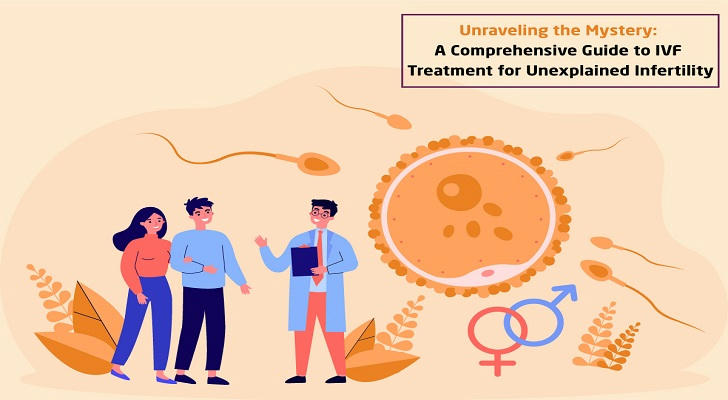👨👩👦 Understanding Infertility and IVF: A Common Challenge
Infertility is the inability to conceive after one year of unprotected sex (six months for women over 35). It impacts both men and women, with the causes generally divided into:

🤷♀️ Female infertility (40%) – Issues like ovulation disorders, blocked fallopian tubes, endometriosis, or reduced egg quality due to aging.
🤷♂️ Male infertility (40%) – Low sperm count, poor sperm motility, or structural problems affecting sperm production.
🤔 Unexplained infertility (20%) – No clear medical cause, making the journey even more frustrating for couples.
While infertility can be emotionally and physically taxing, modern reproductive medicine has advanced solutions, with in vitro fertilization (IVF) 💟 being one of the most effective treatments.
🌟 What is IVF? A Scientific Breakthrough
IVF (In Vitro Fertilization) is an assisted reproductive technique where fertilization occurs outside the body, and the resulting embryo is transferred into the uterus.
👩🏫 The IVF Process in Steps:
1️⃣ Ovarian Stimulation – Hormonal medication encourages the ovaries to produce multiple eggs.
2️⃣ Egg Retrieval – A minor procedure is performed to extract the eggs.
3️⃣ Sperm Collection & Fertilization – Sperm is combined with the eggs in a lab.
4️⃣ Embryo Development – Healthy embryos are selected.
5️⃣ Embryo Transfer – The best embryo is implanted into the uterus.
6️⃣ Pregnancy Test – A blood test confirms pregnancy two weeks later.
📊 Success rates depend on age and health factors:
Women under 35 – ~55% per cycle
Women 35-40 – ~35% per cycle
Women over 40 – ~20% or lower
💰 Funding IVF Treatment: Affordable Options
Since IVF can be costly, couples often seek financial assistance. Some options include:
✔️ Nonprofit Organizations – Some offer grants to cover part of the cost.
✔️ Fertility Clinics – Special programs or discount plans may be available.
✔️ Government Support – Certain countries and states provide funding or tax breaks for fertility treatments.
✔️ U.S. Government Assistance – Several states in the U.S. mandate insurance coverage for fertility treatments. Additionally, government-backed grants such as the National Infertility Association’s Family Building Grant,the association provides financial assistance to eligible individuals and families to help them cover the costs of fertility treatments. Grant amounts vary by program and applicant's specific circumstances, but generally range from $2,000 to $16,000. And state-funded programs in New York, Massachusetts, and Illinois offer financial aid up to $10,000 per cycle for eligible individuals.
✔️ Tax Credits – The U.S. offers medical expense tax deductions that allow some IVF costs to be claimed on federal tax returns.
👩🌾 IVF Success Stories
👇 Case Study: Olivia & Mark’s Journey
After trying for four years, Olivia (34) and Mark (36) discovered Olivia had endometriosis, making conception difficult. They turned to IVF, and after one cycle, they were overjoyed to hear: "You're expecting!" Nine months later, they welcomed their baby girl, Ava. 🍼
👇 Case Study: Mia’s Solo Path to Motherhood
Mia (42) decided to become a single mother. Using IVF and donor sperm, she gave birth to baby Leo. Today, she inspires other women to take control of their fertility choices.
💸 Challenges, Costs & Emotional Aspects
💵 High Costs – One IVF cycle in the U.S. can range from $12,000 - $25,000.
🧠 Emotional Strain – The process is physically and emotionally demanding, and multiple attempts may be necessary.
🚗 Insurance Coverage – Some companies cover IVF, but many couples pay out of pocket.
Despite these hurdles, over 8 million babies have been born through IVF worldwide! 🌎
🔎 Did you know? Some government programs offer grants, tax incentives, or partial subsidies to make IVF more accessible.
🏡 The Future of Fertility Treatments
Thanks to advancements in medicine, IVF success rates continue to improve. Innovations include:
Preimplantation Genetic Testing (PGT) – Ensures the healthiest embryos are selected.
Egg Freezing – Helps women preserve fertility for the future.
AI in Embryo Selection – Increases implantation success rates.
Stem Cell Research & 3D-Printed Ovaries – Cutting-edge innovations shaping the future of fertility care.
💖 Conclusion: IVF as a Path to Parenthood

For those struggling with infertility, IVF can turn dreams into reality. Although it requires patience, strength, and financial planning, the ultimate reward—a child—is priceless. 💕
📈 Nearly 2% of babies born in the U.S. each year are conceived through ART(including IVF).
If you or someone you know is considering IVF, consult a fertility specialist to explore available treatment options and financial assistance programs. Parenthood might be closer than you think! 🌟
How to get started
Follow the steps below and make the most of the available resources.
